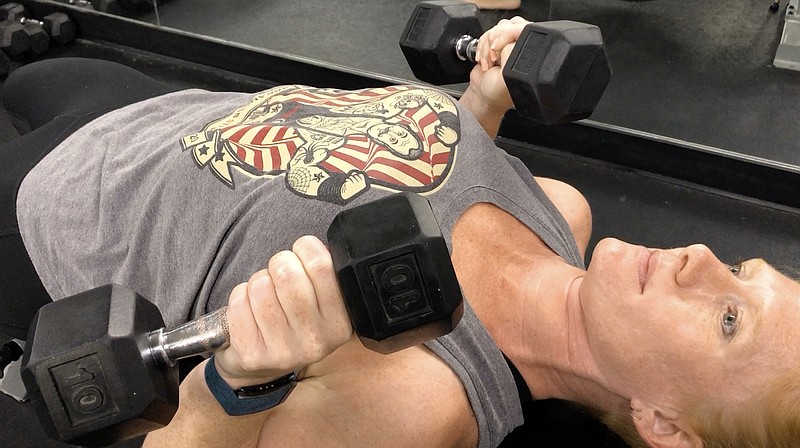By any standard, the basic weighted dumbbell is among the most rudimentary pieces of fitness equipment in use today.
Nearly every living human has been introduced to the dumbbell at some point during his or her life. It is an iconic representation of a lifestyle, a way of thinking and of hope.
It also is more versatile than it looks.
Some of my earliest memories of fitness and exercise involve the dumbbell. Back in the '80s and '90s, the only dumbbells I knew were made of metal. There were some that had small plates on each end, and others had massive blocks of iron surrounding the small grip in the center.
More than other types of resistance, the dumbbell provides a feeling of graduation and accomplishment. As strength improves, one is rewarded with the ability and confidence to move "down the rack" into the heavier, more challenging dumbbells. And only the super strong can think of moving the dust-covered behemoths ominously resting at the bottom level.
Maybe it's nostalgia, but I still have a special affinity for using dumbbells. They are unapologetic and straightforward units of mass designed to provide maximum flexibility for the exerciser, freedom that I have always appreciated. The same pair of dumbbells can be used to train the upper body, lower body, core, balance, agility — and even flexibility.
Embracing the dumbbell is about appreciating its simplicity and using one's own creativity. I have a home set of adjustable dumbbells that range from 10-60 pounds, and I'm able to perform hundreds of different exercises with this single set. An exercise bench is the dumbbells' best friend and confidant. They go together almost like peanut butter and jelly.
This week's exercise packs the dumbbell and bench sandwich with a cool way to reduce wrist pressure and increase grip confidence.
[Video not showing up above? Click here to watch » arkansasonline.com/1004master/]
1. Select a pair of dumbbells and lie on an exercise bench.
2. Adjust your grip so that your thumb side of your hand is touching the inside of the dumbbell weight itself, not just the grip. This will feel unusual, as most people grip in the center.
3. Wrap the forefinger over the thumb to keep a solid connection. Make sure this adjusted grip is firm for both dumbbells.
4. Lie on your back and press the dumbbells up in a normal chest press. You should feel more stable, with less discomfort on the ulnar (pinky) side of the wrist.
5. Perform two sets of 12.
This is a cool technique for those who like to use dumbbells but often feel wrist discomfort. This minor grip adjustment really works to load the resistance on the stronger structures of the forearm and wrist. Give it a try today!
Matt Parrott is glad to hear from readers. Send him questions or share a story about your pandemic workouts at
vballtop@aol.com
